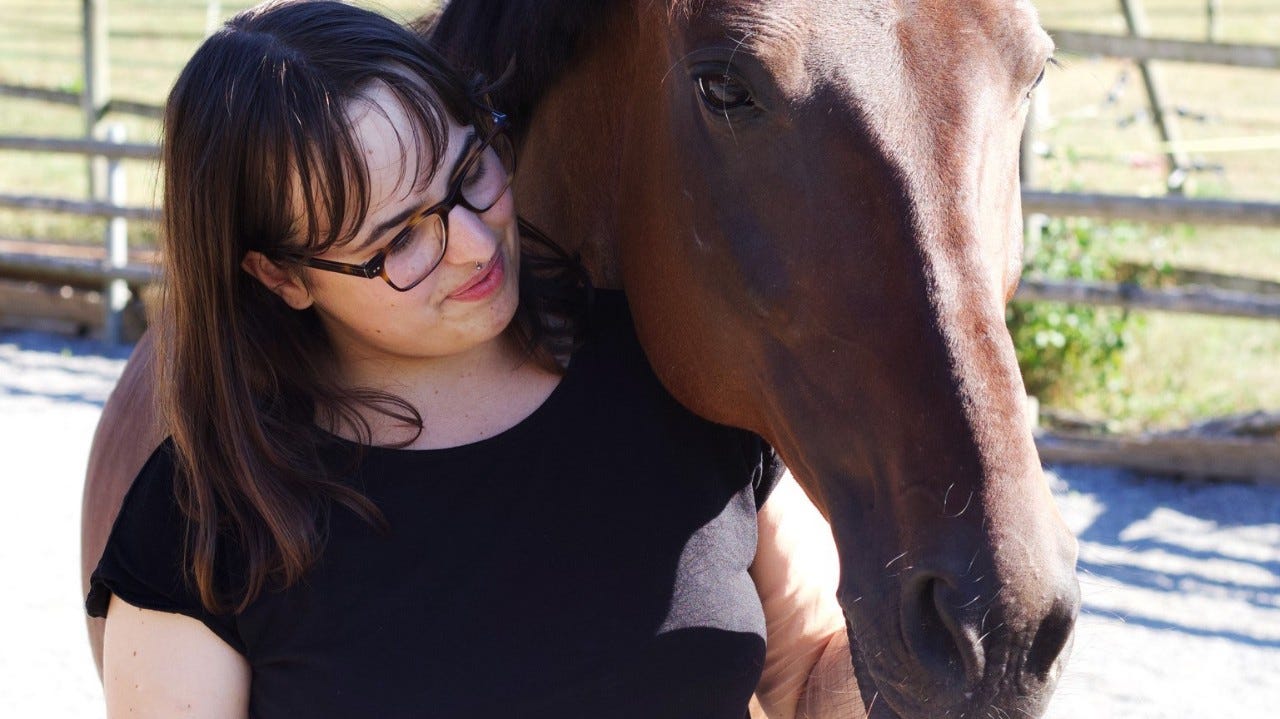Healthy strategies to stop self-harming
Rahel F. (21) is one of many young people who have resorted to self-harm. What triggered her self-harming and how she found a way to stop.

“Even as a young girl, I was often very mentally unstable and my emotions fluctuated,” explains Rahel F. Now working as a software engineer, she was also precocious, curious, a perfectionist and had a thirst for knowledge. “I didn’t get on well at school. I just wanted to belong, but the other children made fun of me.” The constant teasing led to a feeling of isolation and a need for attention.
The first time that Rahel heard about self-harm from a school friend, she was shocked but also curious: “I felt betrayed by the whole world and just thought that I’d give it a go.” At first, she cut herself with scissors, then a kitchen knife and eventually razor blades. “Initially it had a relieving effect on me, but I was also terrified that I was able to do it,” she says of her first experiences with self-harm. “Later came the stress of hiding it from my parents and covering up my arms at school.”
Girls are often more likely to self-harm than boys.
Rahel is now 21 years old. She spent a quarter of her life cutting herself. And she’s not alone. A survey conducted in Germany revealed that 30% of young people have tried self-harm at least once, with 10% doing it more than once.
“The risk of self-harm increases from age 12, is most prevalent at the age of 15-16, and diminishes again afterwards,” explains Dr Andrea Wyssen, chief psychologist at University Psychiatric Services in Bern. Girls are more likely to be treated for self-harming behaviour, and there are differences between the genders: “While girls often scratch or cut themselves, boys burn themselves or punch a wall.”
“Thos affected often [...] have difficulties controlling their impulses.”
Self-harm does not necessarily equal borderline personality disorder
Wyssen explains there is no general trigger for self-harming behaviour, but there are recurring patterns: “Those affected often show increased sensitivity to emotional stimuli and have difficulties controlling their impulses. They find it harder to regulate their emotions than other people.”
Self-harm helps those affected feel something for a moment or stop an unbearable emotional state. “Dealing with the underlying issue of self-harm and controlling the urge takes a huge amount of energy.”
Self-harming behaviour rarely occurs in isolation. Those affected often show symptoms of depression or anxiety. They often withdraw socially and have a negative body image. Dispelling a common prejudice, Wyssen explains that self-harming behaviour may be a symptom of a borderline personality disorder, but five out of nine symptoms have to be identified for a diagnosis.
However, self-harmers have a higher risk of suicidal tendencies due to common factors such as emotional dysregulation and stress.
Short-term therapy: a first step to recovery
There is no medication to treat self-harm. Self-help programmes can provide support for mild cases, but psychotherapy is the most effective treatment. “Most recent research results show that short-term therapy is very beneficial,” says Wyssen. “After ten sessions, self-harming is reduced by 50%, with some people even stopping altogether.” In some cases, more intensive psychotherapy, such as trauma therapy, is needed to get to the bottom of underlying issues.
Rahel also required trauma therapy. When she was 14, she was in a physically and emotionally abusive relationship for over a year. “The abuse triggered an even stronger need for control.” Cutting herself became part of her daily routine and developed into an addiction. “I convinced myself that I needed to self-harm.”
When she realised how dangerous the situation had become, she turned to her mum for help. “The first thing my mum asked was whether she’d done anything wrong,” recalls Rahel. After a long search, they finally found a suitable psychiatrist. “She took time for me and gave me the time I needed. She didn’t pressure me or send me to a clinic. She respected my needs and my maturity.”
Develop healthy strategies
Despite the support she received, Rahel kept on self-harming. The turning point came when she was 18. “I’ve always loved horses. Animals gave me a feeling of stability that I never got from people.” Her parents bought her a horse, on the condition that she take care of it, including the financial side of things. “When I got Remény, I realised that I now had a responsibility. I had to look after something.” And from one day to the next, she stopped self-harming. She hasn’t looked back since. Remény means “hope” in Hungarian.
Although she no longer self-harms, Rahel is still plagued by periods of depression. “In therapy, I try to understand what happened back then and how it’s still affecting me today.” She is also learning to develop healthy strategies: “For example, when I have destructive thoughts, I analyse which thoughts form a toxic pattern and what actually really happened.” And in moments when she used to self-harm to feel better, she has found an alternative that helps: breathing exercises. “It helps me feel grounded.”
Last year during a bad patch, she briefly thought about cutting herself again. She can’t explain exactly why she didn’t resort to self-harm, but she thinks she didn’t want to disappoint herself or her friends and family. “I’ve hurt myself enough – both mentally and physically. It has to be possible for me to life a stable life.”
Rahel seems to be at peace with herself. “When I look at my arms, I think that the scars are a part of me, something that I will have with me my whole life. But they have also made me who I am today.”


